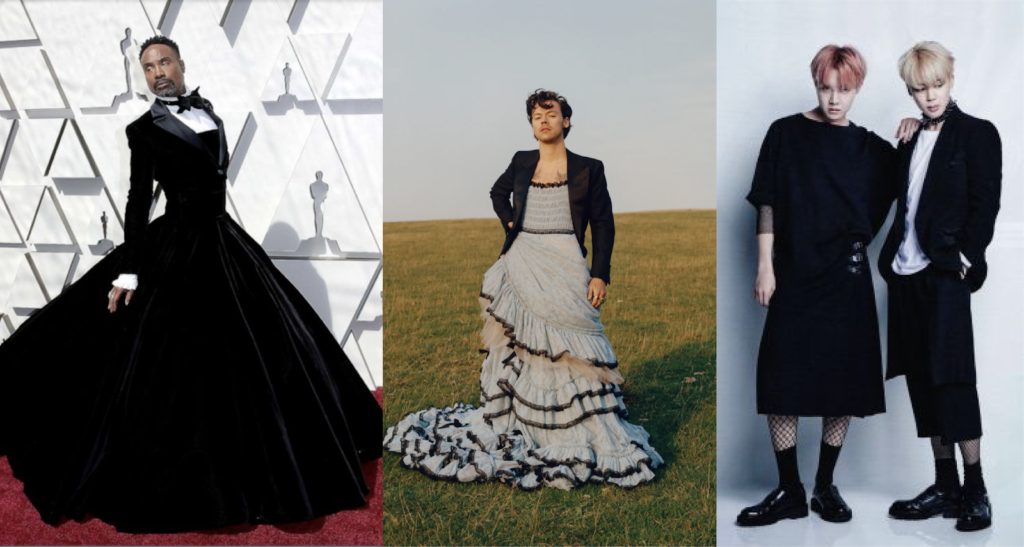After Harry Styles made history by being the first man on the cover of Vogue Magazine and wearing a dress, for the next couple of days, my phone was packed with content about the Vogue cover — TikToks, Instagram story reposts, you name it. Styles received a massive amount of backlash and praise, yet he deserved neither to the extent it was given.
In this Vogue photoshoot, he sports 10 different looks including a dress paired with a Gucci jacket, a Comme de Garçons Homme Plus blazer and kilt, and an intricately-styled trench coat.
Far-right conservatives Ben Shapiro and Candace Owens deemed Styles’ dressing to be “non-masculine.”
First and foremost: Styles’ fashion choices should be no concern of Owens or Shapiro.
Fashion policing when it comes to gender identity exists as a way to perpetuate society’s gender norms — to enforce stereotypical gender roles and notions of “masculinity” and “femininity” onto the public as mutually exclusive. Historically, especially in the Western World, fashion has divided gender into two binary sectors. However, as Styles shows us in his photoshoot, men can wear frills and still remain “manly.”
Once a man puts on a dress, he does not become any less of a man. Once a woman wears a suit, she remains as much of a woman as she is when she wears a skirt.
On the other end, Styles has acquired probably too much positive recognition when compared to the others who have done similar feats. Though the landmark of having a male on the cover of Vogue magazine, that too in a dress, is worth celebrating, people have considered his wearing a dress as the landmark. Styles is not the first to pioneer through the depths of gender fluidity; in reality, so many others have worked tirelessly to oppose gender fashion roles and have not been placed on the same pedestal as Styles — especially people of color.
Prince performed on tour in Washington, D.C., while decked from head to toe in purple glitter. Lil Nas X wore a gold-studded, fluorescent pink cowboy suit to the 2020 Grammy Awards. Male k-pop stars are often feminine and many are androgynous. Billy Porter arrived at the 2019 Met Gala wearing a velvet, floor-length tuxedo gown. None of these people were revered as much as Styles was.
Needless to say, Styles wearing a dress is monumental in representing gender fluidity in the mainstream media. While no part of the recognition he received is his fault, it completely dwarfed the efforts of so many other people who are not put on the same pedestal as Styles was. Simply because Styles’ white maleness is palatable to society does not mean he should represent opposing gender norms in the music industry.
Harry Styles did not create gender fluidity in mainstream media. We need to stop acting like he did.
























